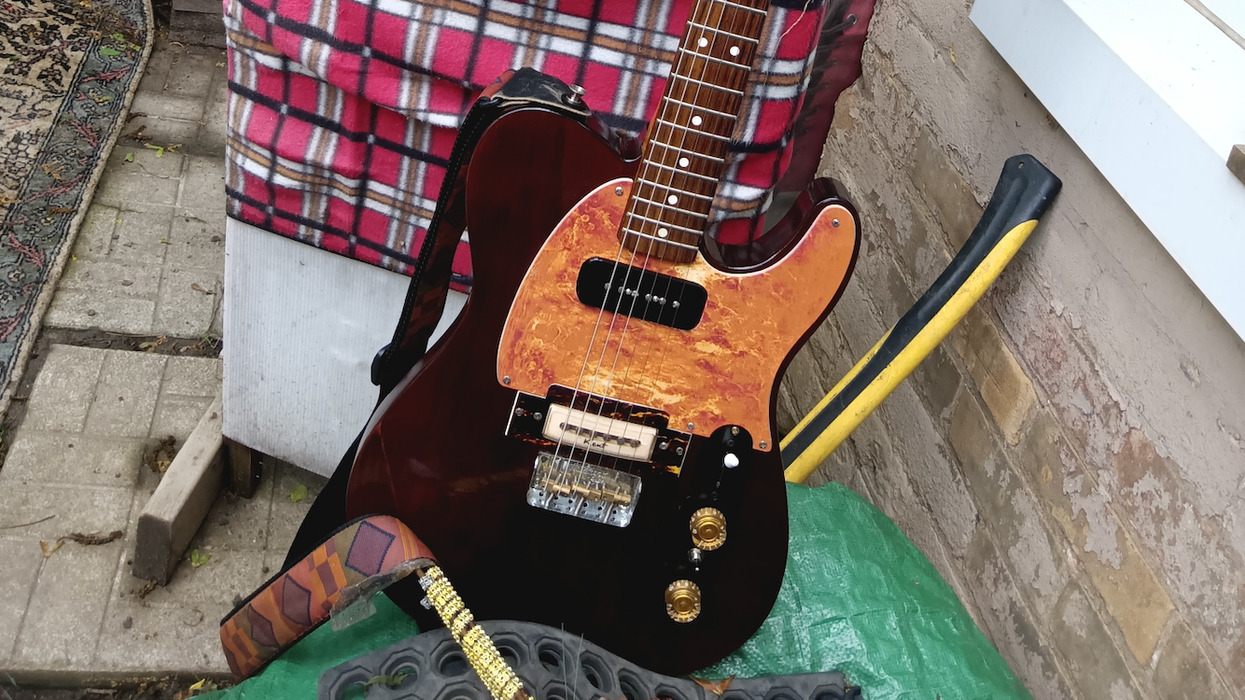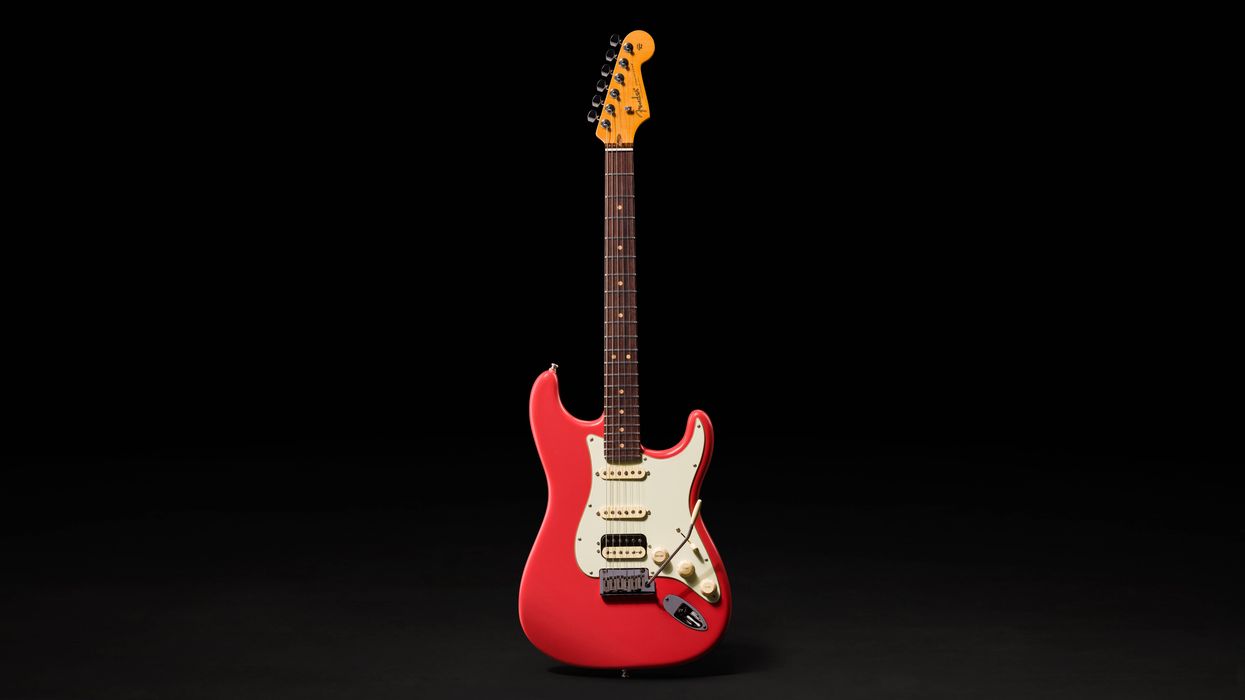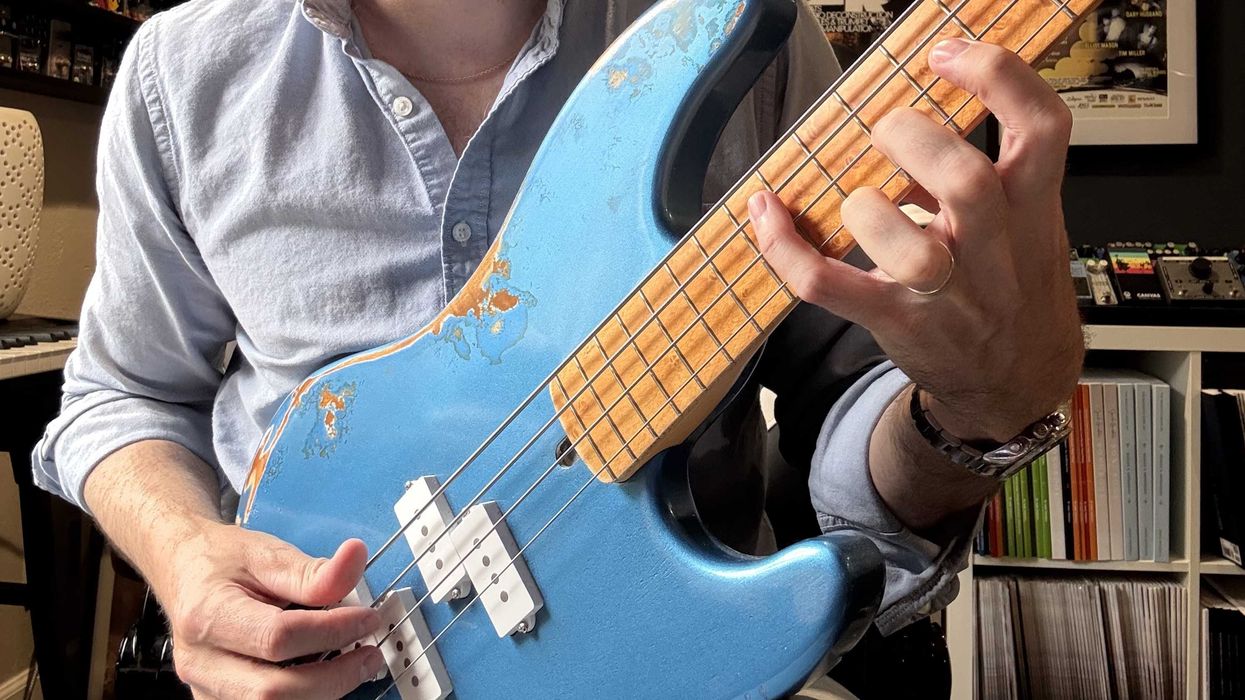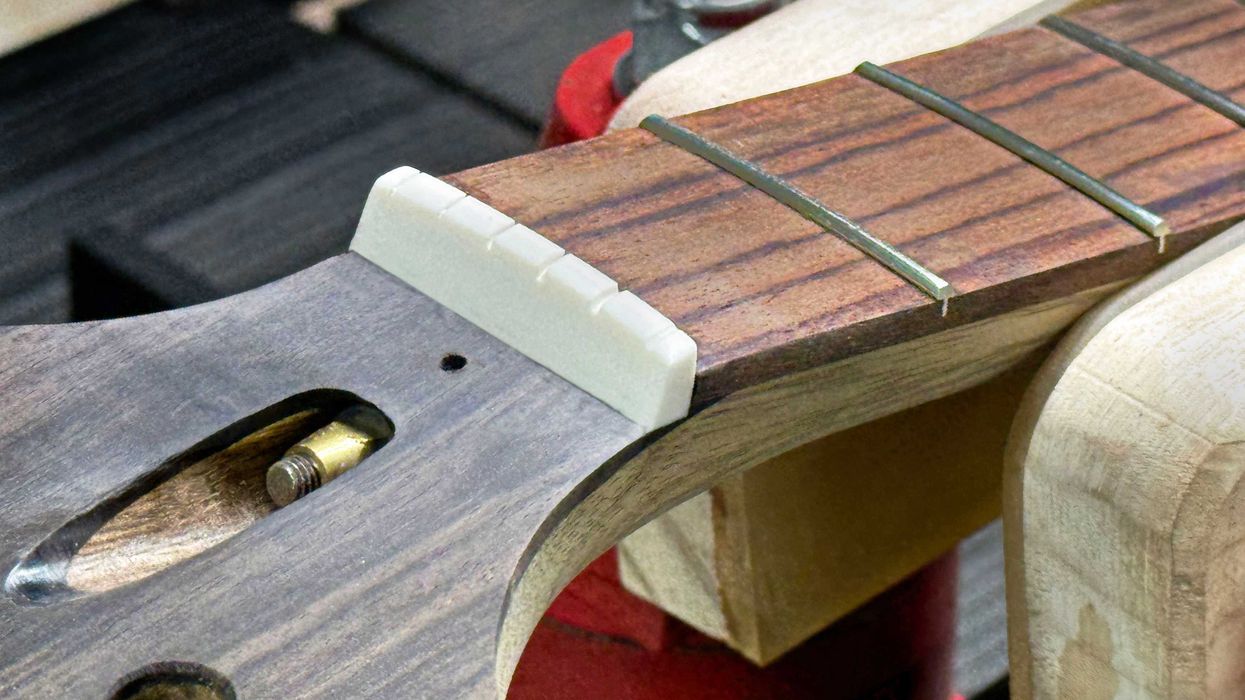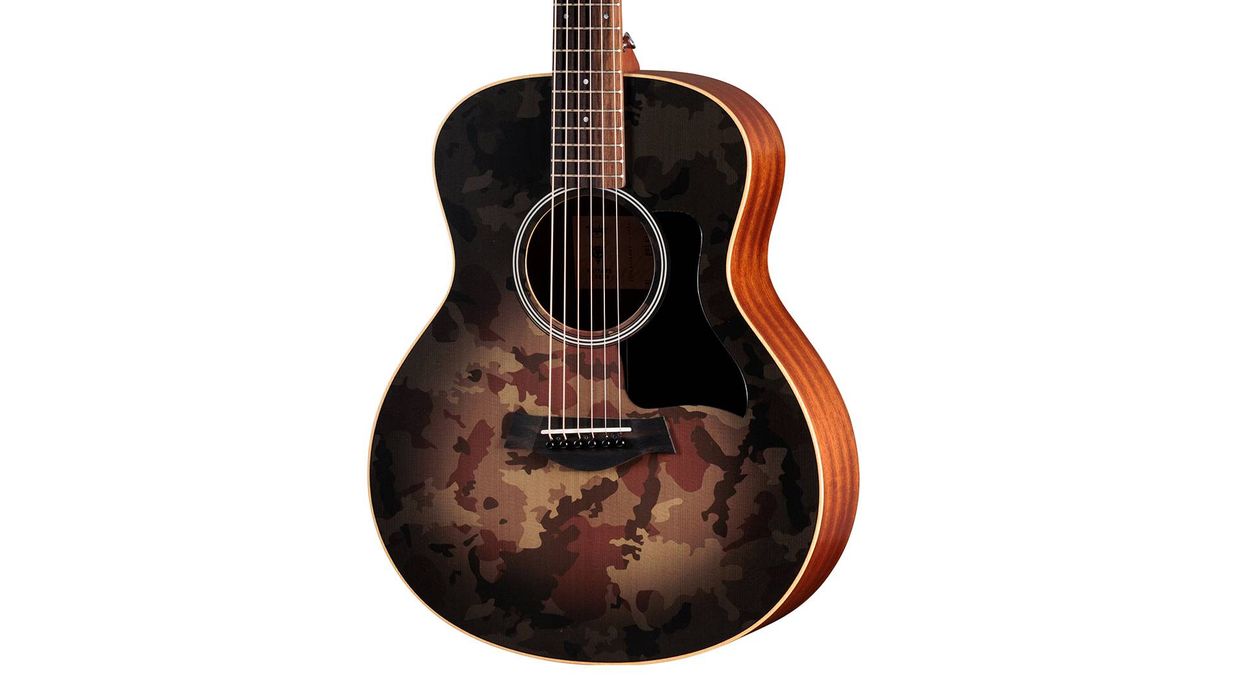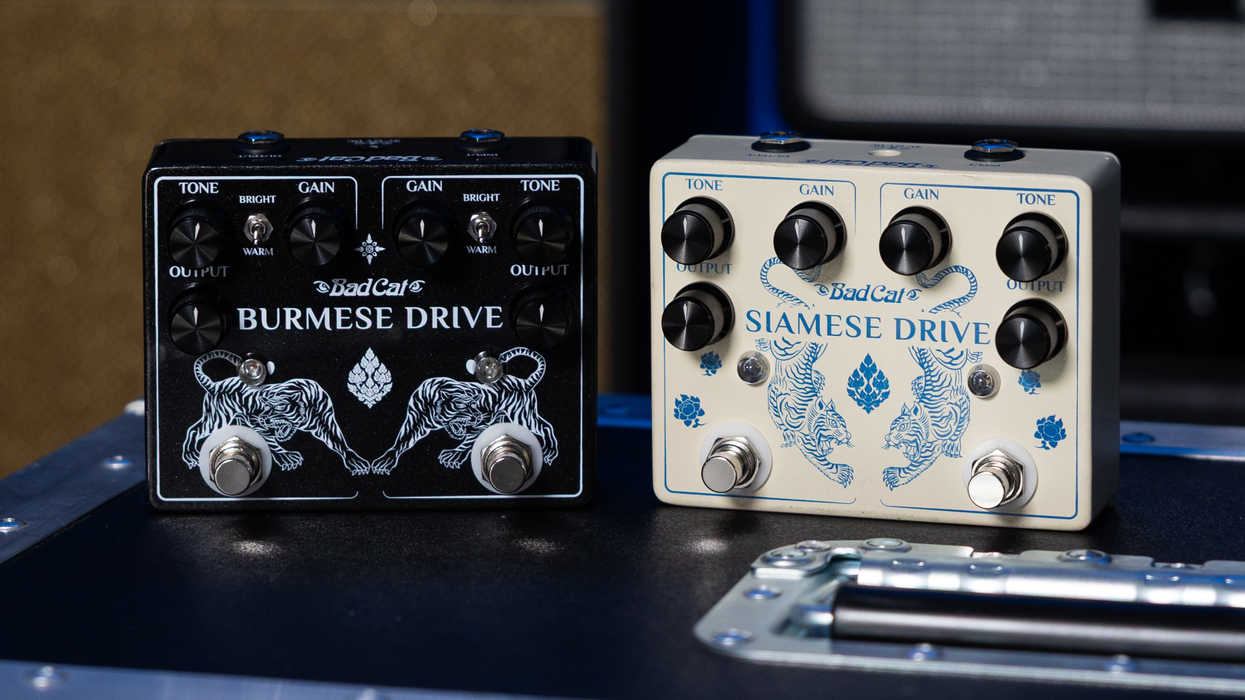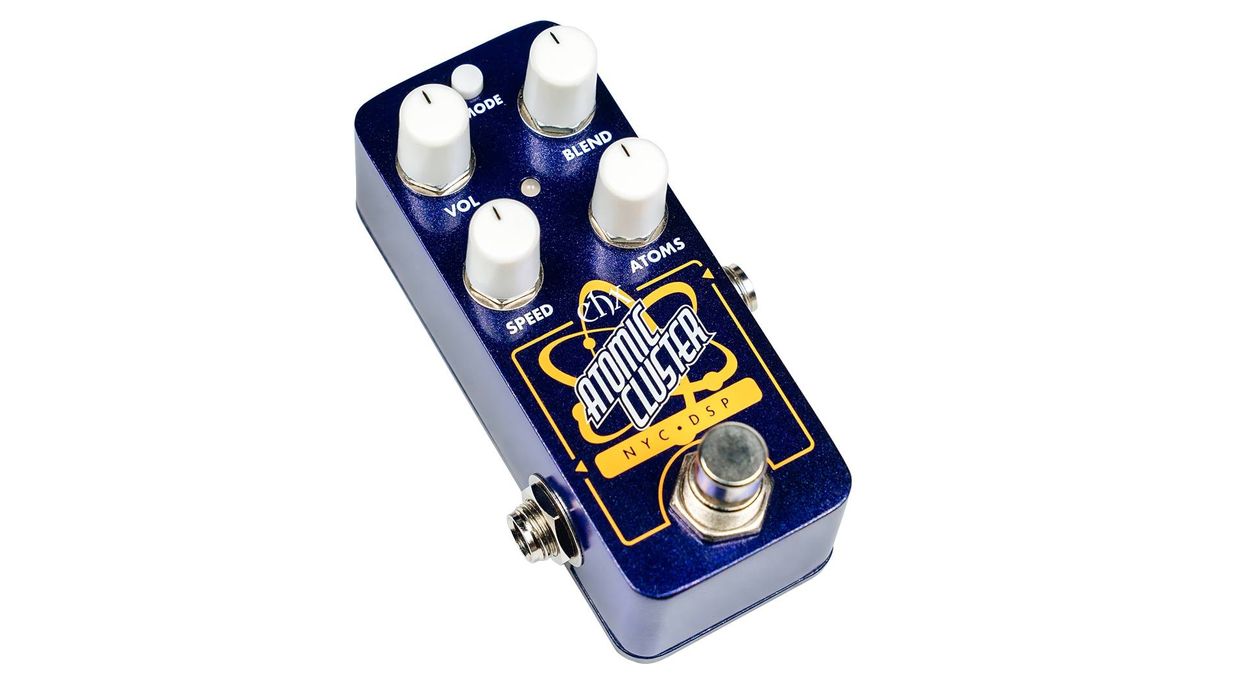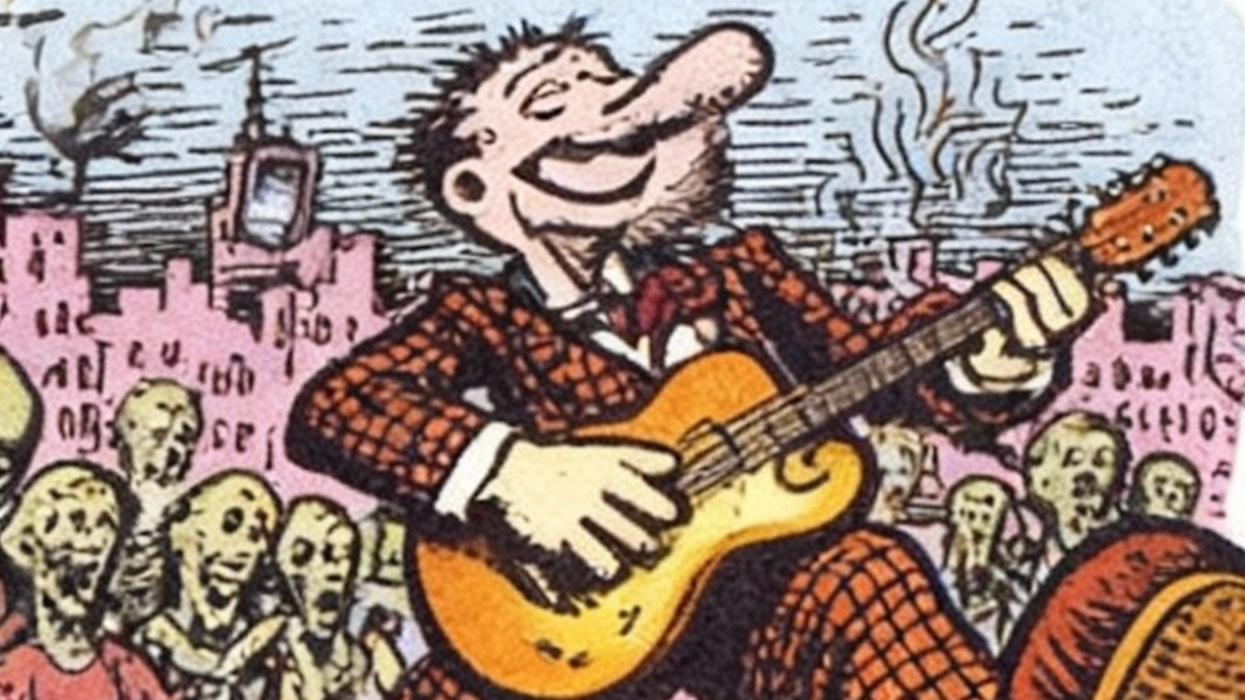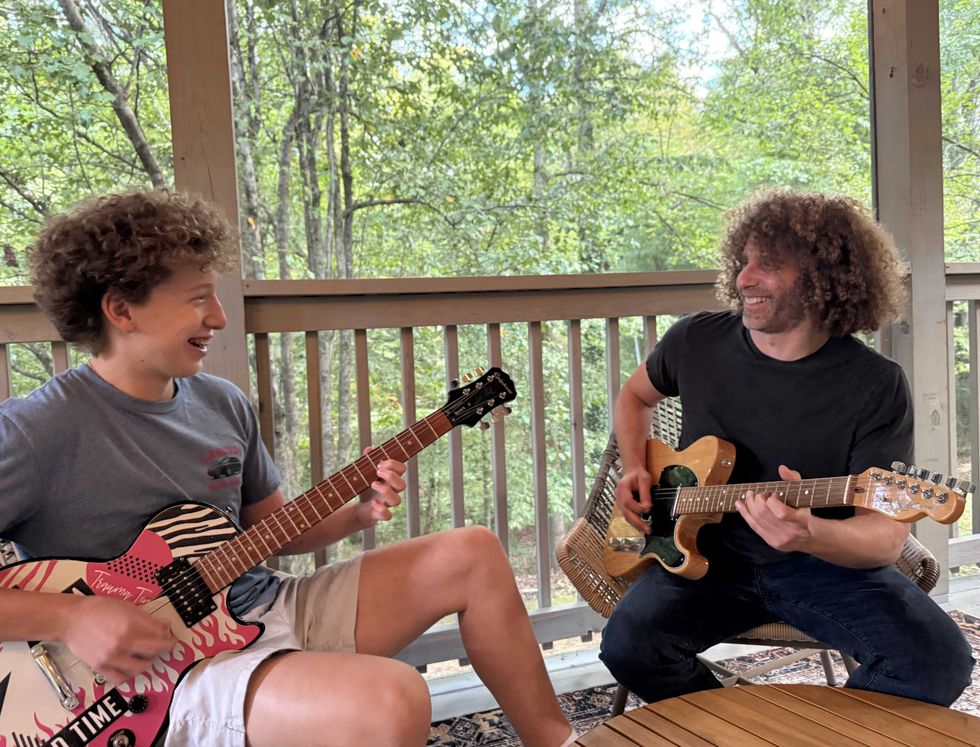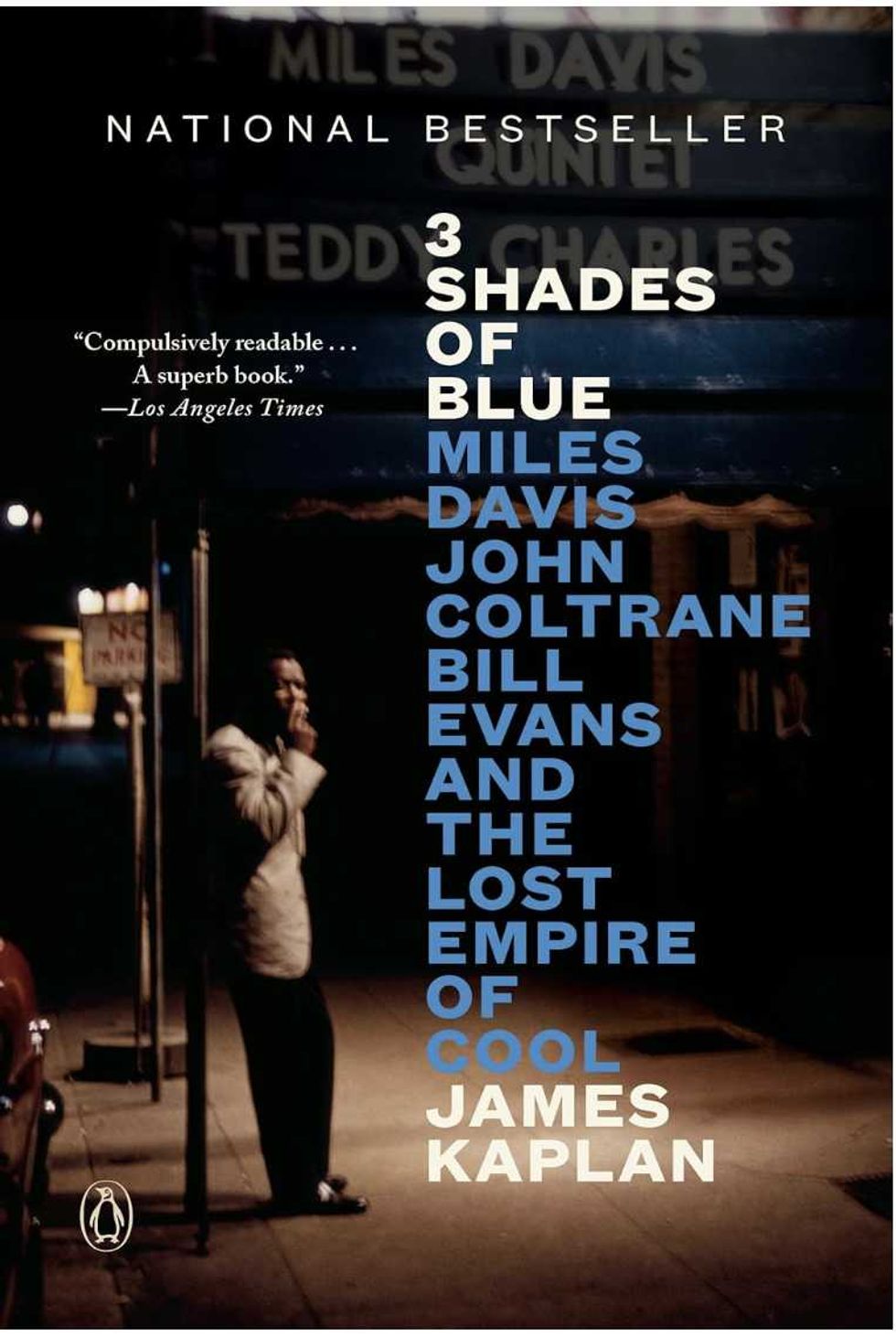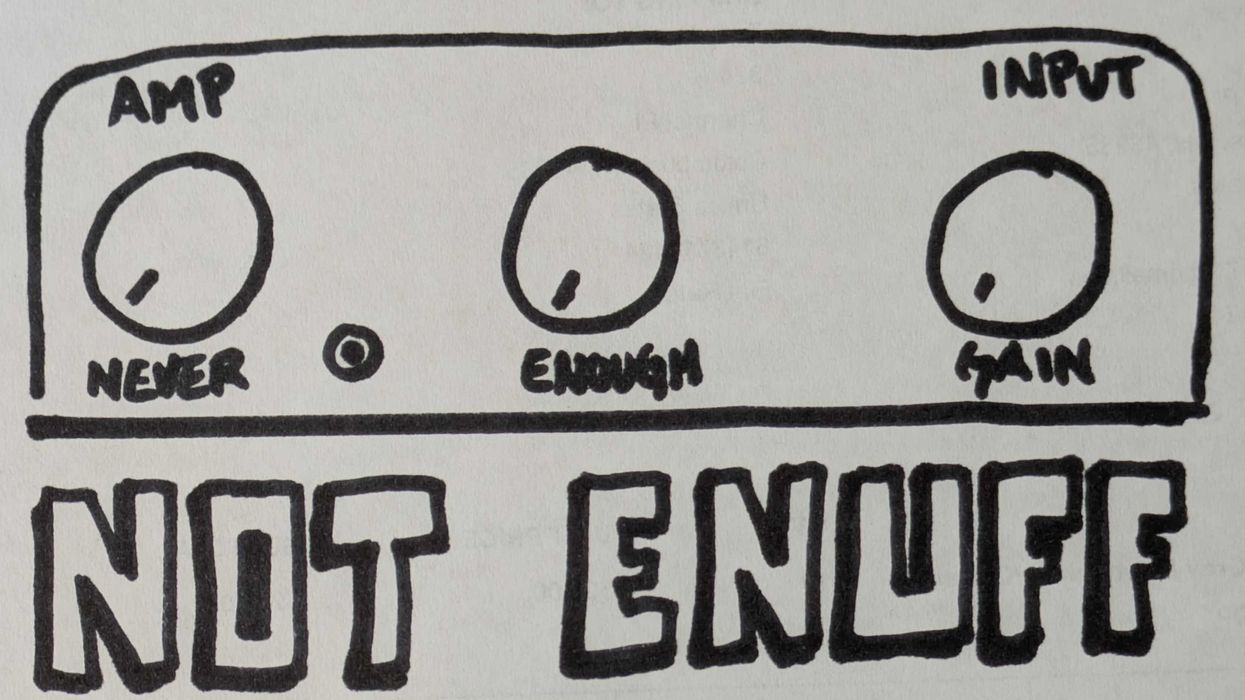My dad, Al, was a skilled carpenter who did all manner of woodworking, including reproductions, cabinetry, and custom jobs. In the early ’70s, he and my uncle Bruno harvested a pile of walnut and cherry logs at a sawmill in Erin, Ontario. I went along, and it was a fantastic experience. The entire mill, both the main rip and cutoffs, was powered by a John Deere two-cylinder tractor with a 20-foot belt attachment. Wow!
Reader: Kirk Gresser
Hometown: Brantford, Ontario
Guitar: Alcaster
The planks were stored at my uncle John's farm for 10 years, and two brothers who assumed the business name Flintstone and Kramden (honoring Jackie Gleason, of course) decided to use them, along with butternut they purchased, to make a series of grandfather clocks. The guts of the clocks were from Germany, so they were costly, and then Ethan Allen came along and that was that for the clock business. Still, they made quite a few clocks, and by the time they were done there were just a few planks of the original wood left over. After my Dad passed I inherited three of them.
I wanted to use them to build a guitar, but having no experience in that world, I reached out to a talented local luthier, Jesse Livingstone. I gave him the cherry planks to shape the body, which would be his first electric-oriented project. I wanted a T-style but tend to find traditional Telecaster bodies chunky, so I used a 1/4" thinner Squier Telecaster as a template. Jesse also carved a Stratocaster-like belly and forearm cuts, and so the body feels much more like my Stratocasters—in other words, perfect.
“I wanted a T-style but tend to find traditional Telecaster bodies chunky, so I used a 1/4" thinner Squier Telecaster as a template.”
An inventive local amp repairman, Pete Vanderveen, installed the rosewood Squier neck, and stuck a Seymour Duncan P-90 in the neck position and a ’60s Kent single coil, which reminded me of an old Kelvinator refrigerator handle, in the bridge. The Wilkinson bridge enables stringing through the body or as a top-loader, and two Gibson speed knobs serve as volume controls for each pickup. Pete also installed a series/parallel switch.
The pickguard, made by Greasy Grooves, is designed to resemble rust. I had hoped to match the cherry red of George Gobel’s Gibson L-5 but couldn’t find the exact color, so I used burgundy leather dye and five coats of lacquer. The result, which I call the “Alcaster,” looks like black cherry. The whole guitar comes in at a light 7.5 pounds. With D'Addario .011-.049s, the guitar delivers a Les Paul-like tone on the neck pickup, while the combined sounds go from round to Howlin’ Wolf.
As for me? I've been writing songs for 50 years (not one of them has bought me so much as a cup of coffee) under the name Purple Joe. Imagine Mark Knopfler, Jimi Hendrix, and Neil Young playing poker with Scott Merritt and Carole King—and losing!
